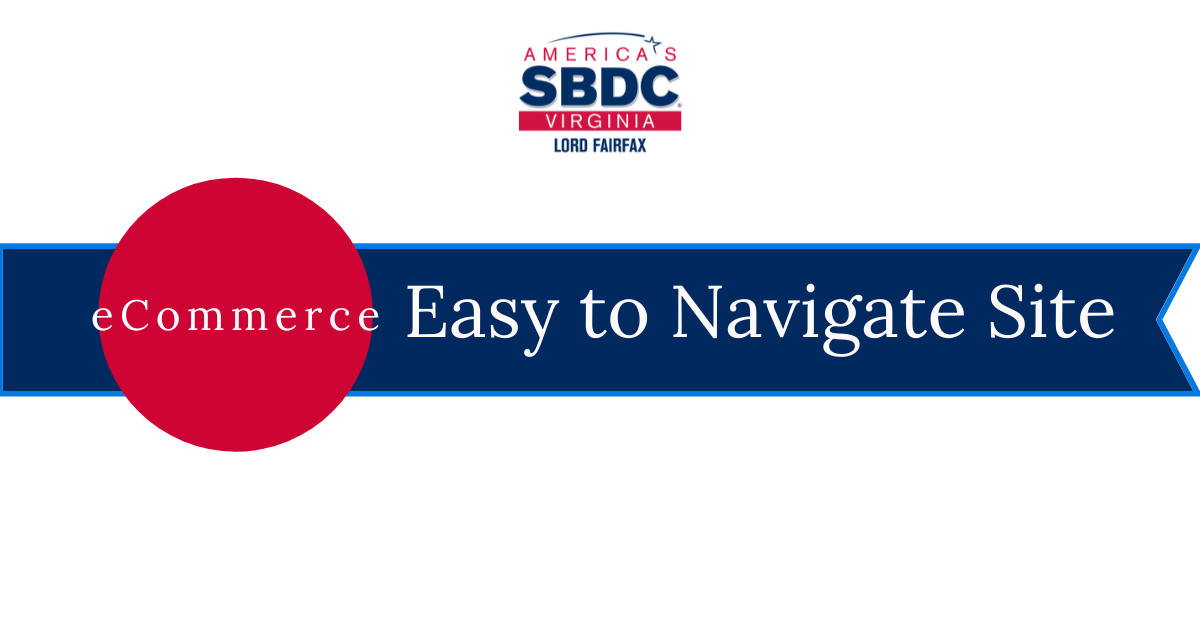According to Statistica, approximately 1.8 billion people, or ¼ of the world’s population are buying online. Online shoppers demand that we pay close attention to eCommerce best practices.
If you are a small business owner, you cannot afford to ignore eCommerce!
In today’s environment, customers want options.
Customers want to buy what they want, when they want, and the way they want. And they want to use the payment type of their choice.
Obvious E-Commerce Best Practices
You must be selling online.
Selling online gives your customers options, saves them time, and gives you the extra revenue streams you will need in times of change.
Prior to the shutdown our country has just experienced , one study showed that 81% of people check out business websites before walking into the store.
A strong online presence coupled with eCommerce are important for every small business.

Make Your Website Easy To Navigate
When you walk into a retail store, you see displays, sales associates, and it’s clear where and how you check-out.
Does your website make it clear to visitors where and how to check out?
An unclear path online will create confusion and cause paying customers to exit your website.
When visiting your website, what’s the first impression a visitor gets?
Hopefully your website doesn’t scream 1998. In today’s environment, customers are checking to make sure your business is open online first.
Today’s consumer demands great looking websites that are functional and easy to navigate.
Your website is one of four eCommerce best practices.
Things To Consider About Your Website
- Based on your website, does your business appear open and relevant?
- Have you updated your website lately?
- When visiting your site, what is the experience like for customers?
My suggestion is to ask a few people to test our your site and give you feedback from an “outside” perspective.
Let them give you feedback about your online product displays.
If visitors need help while on your website, do you have Live Online Chat, a phone number that is set as a link so customers can connect with you at the push of a button?
Do you have a FAQ page on your website or is your customer left to figure things out on their own?
Remember, if a customer gets frustrated on your website, they won’t make it to your checkout page. They’ll leave your site and leave you with a high bounce rate.
As for eCommerce best practices, make sure your visitors can get the help they need while visiting your site.
E-Commerce Best Practices Require Your Sales Process To Work
When was the last time you or someone from your team went through your online sales process from start to finish?
When testing your online sales process, think about what your products look online.
If someone has a questions while on your site or making an online purchase, do you offer customer service online via Live chat, a linkable phone number, a FAQ’s page or is your customer left to figure things out on their own?
When people can’t get the help they need they get frustrated. Frustrated shopped will go somewhere else where the buying process is more convenient and easy.
Before another potential customer leaves your shopping cart, test your online buying process. Have a friend who has never bought online from you test out your online system.
Take extra steps to make sure your system works flawlessly because you’d hate to loose sales over something you could have fixed.
And without testing your process, you’ll never know what’s happening on the customers buying end.
Choose The Sales Platform That Fits Your eCommerce
When considering which platform is best there are many options to choose from.
Consider what you’re selling. Is there is a specific platform that works better than others for your particular product.
For example. If you’re selling downloadable products then Gumroad might be perfect for your needs. If you want to sell on multiple platforms at once, you’ll want a platform that integrates with those platforms (example Etsy or Ebay).
Make sure the platform you choose takes the payment your customers prefers to use. Make buying easy for your customers and invest the time and effort to understand what you need before you start to sell online.
If you already have a website on Wix, Weebly, Godaddy, or use Squarespace, these websites have an online store option that will cost you little each month.
They have great templates to help you get started easily. If you have a point of service system, it’s important that your POS integrates with your online store. I don’t recommend having two sets of inventory, payment, and tracking systems.
For WordPress users, WooCommerce is the biggest eCommerce in the world and works with WordPress. It can handle affiliate sales, blogs, event management, and it works well with Taxjar which is an add-on that can compute sales tax, and auto file for tax remittance.
BigCommerce is known for it’s headless marketing displays and is great for wholesale businesses or multichannel sales. Shopify has over 100 different payment options.
ECommerce best practices include offering online sales, having a website that’s easy to navigate, having an online sales process that works, and an online sales platform that works best with the products and services you sell.
If you have questions or need free assistance from members of our team, please contact us and we’ll get you connected to the expert who can help you navigate the world of eCommerce, Websites, and online sales.






